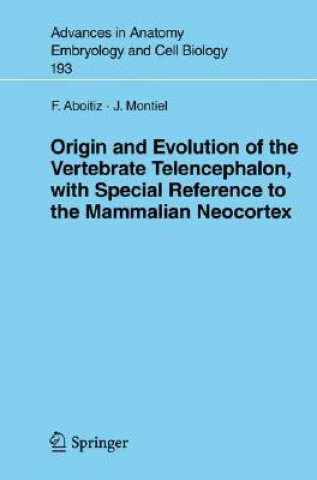
Doručenie
Nákupný poradca





Nehodí sa? Žiadny problém! U nás môžete do 30 dní vrátiť
 Darčekový poukaz
v ľubovoľnej hodnote
Darčekový poukaz
v ľubovoľnej hodnote
S darčekovým poukazom nešliapnete vedľa. Obdarovaný si za darčekový poukaz môže vybrať čokoľvek z našej ponuky.
Origin and Evolution of the Vertebrate Telencephalon, with Special Reference to the Mammalian Neocortex
 Angličtina
Angličtina
 304 b
304 b
30 dní na vrátenie tovaru
Mohlo by vás tiež zaujímať


There is little doubt that the vertebrate brain is the most complex structure we know. As with any complex structure, there is the immediate question about its origins. How could such a complex design develop from the simplest multicellular animals? This problem has pervaded the study of evolutionary biology since its beginnings. Although Darwin (1859, 1871) proposed an impecable mechanism (natural selection) for the gradual transformation of species including human origins, even he sometimes expressed certain doubts about the origin of highly complex structures. This issue has been highly debated both within science and outside it. §The authors follow an approach that has been termed "developmental evolutionary genetics", which seeks to establish a correspondence between embryological processes and the phylogenetic history of an organism. Modern understanding of these hypotheses acknowledges that in fact, early embryos are readily distinguishable among them, and that human embryos are human embryos during all development; they do not pass from a jellyfish stage to a fish stage and so on (Garstang 1922; Gould 1977; Richardson et al. 1997). However, it is also recognized that embryos pass through successive stages in which they acquire the characters proper to each of the nested phylogenetic categories to which they belong. Thus, there is a general concordance between embryonic stages and the phylogenetic history.
Informácie o knihe
 Angličtina
Angličtina
Kategórie




 Ako nakupovať
Ako nakupovať





























